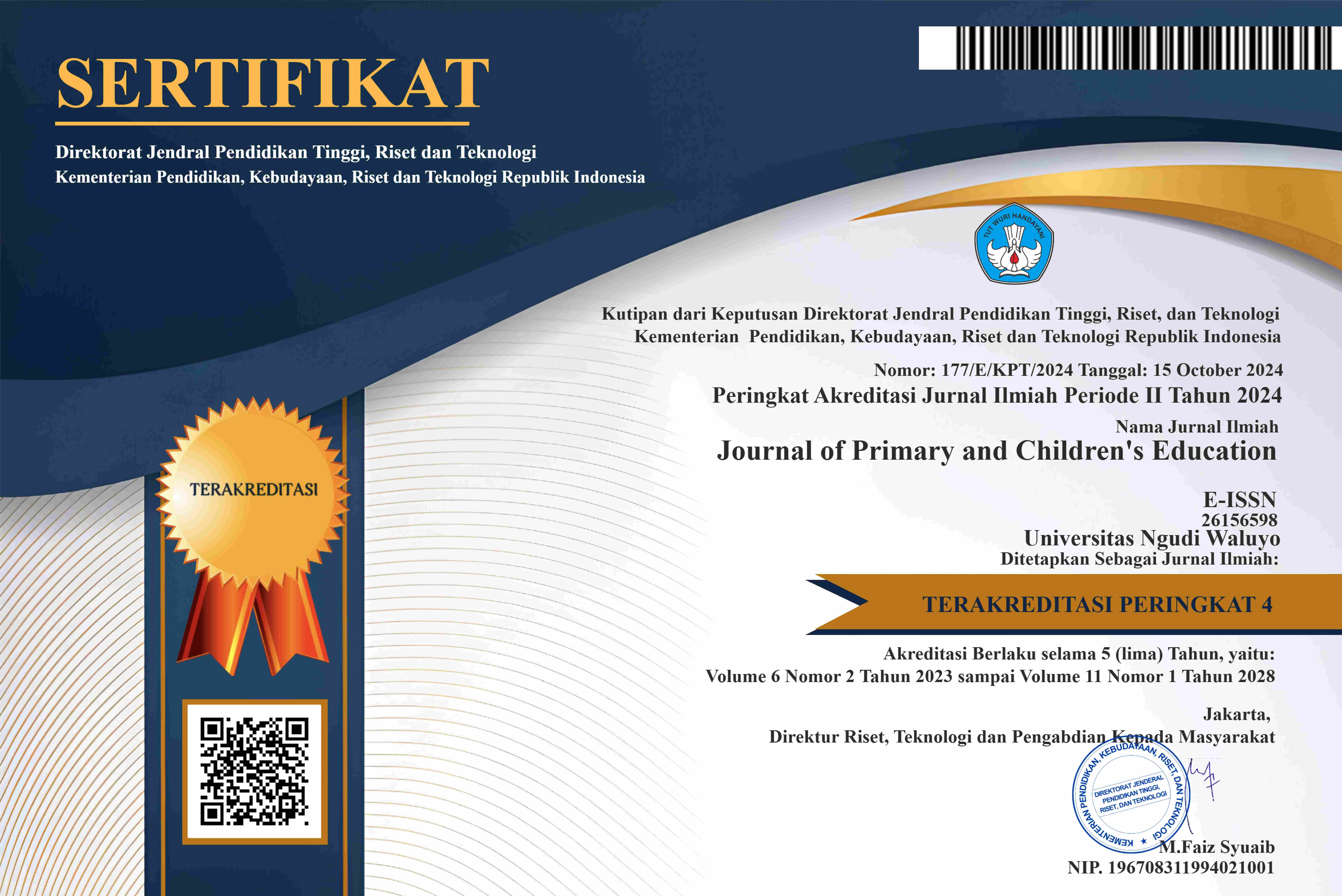PENERAPAN MODEL DISCOVERY LEARNING BERBANTU MEDIA AUDIOVISUAL UNTUK MENINGKATKAN HASIL BELAJAR PADA SISWA KELAS V TEMA 1 SDN WARU TAHUN AJARAN 2022/2023
DOI:
https://doi.org/10.35473/jnctt.v5i2.1926Abstract
The problem that prompted the implementation of this research was the learning outcomes of fifth graders at SD Negeri Waru on daily tests only 9 out of 20 students achieved the Minimum Completeness Criteria (KKM). The subjects of this study were all fifth grade students of SD Negeri 1 Waru, namely 20 students. This type of Classroom Action Research follows the Mc Taggart model which is carried out in 3 cycles. The results of the study showed an increase in the percentage from cycle 1 then increased continuously until cycle 3. The percentage of student learning outcomes from cycle 1 showed completeness of 55% of the number of students with a classical average of 65.5 then increased in cycle 2 to 70% with a classical average of 73.5 and again increased in cycle 3 to 90% with a classical average of 82. Based on the results of the study, it was concluded that by applying the Discovery Learning learning model assisted by audiovisual media, it could improve the learning outcomes of theme 1 in the fifth grade students of SD Negeri Waru.
Published
How to Cite
Issue
Section
License
Copyright notice:
- Authors retain copyright and grant the journal right of first publication with the work simultaneously licensed under Creative Commons Attribution License that allows others to share the work with an acknowledgement of the work's authorship and initial publication in this journal.
- Authors are able to enter into separate, additional contractual arrangements for the non-exclusive distribution of the journal's published version of the work (e.g., post it to an institutional repository or publish it in a book), with an acknowledgement of its initial publication in this journal.
- Authors are permitted and encouraged to post their work online (e.g., in institutional repositories or on their website) prior to and during the submission process, as it can lead to productive exchanges, as well as earlier and greater citation of published work (The Effect of Open Access)







